How Long Do Bearded Dragons Live?
Posted by William Jones on Apr 30th 2025
This is a question that many bearded dragon owners ask when they start caring for these fascinating creatures:
How long are bearded dragons supposed to live?
Bearded dragons are beloved pet lizards due to their friendly nature, unique behavior, and relatively simple care.
Their lifespan can be an indicator of how well they are cared for. Knowing how long they live is essential for providing them with a healthy and fulfilling life. However, many bearded dragon pet owners are unsure of the factors that influence their pet's lifespan. Without proper care, bearded dragons can face issues such as:
- Shortened lifespan due to poor diet or inadequate lighting.
- Increased risk of diseases like metabolic bone disease.
- Stress from improper habitats and environment.
Here is the comprehensive guide by TopFlight Dubia experts, which will answer all your questions related to the lifespan of bearded dragons.
Bearded Dragon’s Lifespan Overview
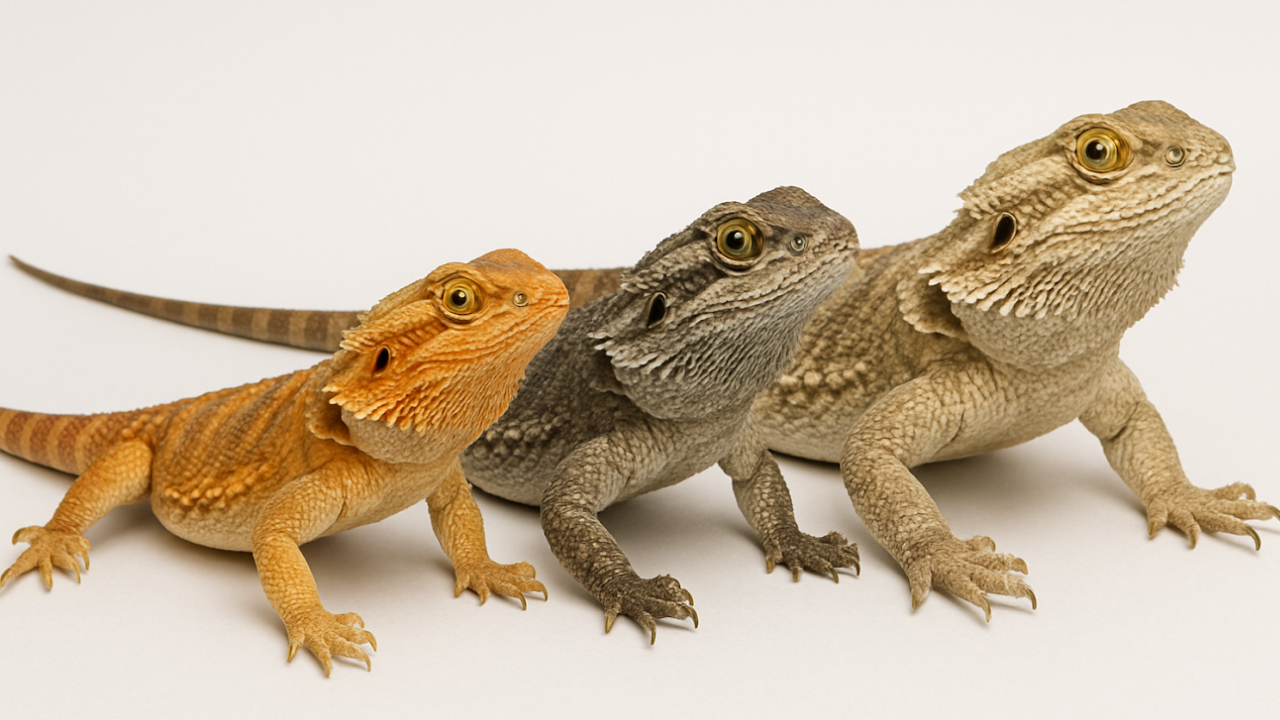
Bearded dragons are from central Australia. Some of the species of bearded dragons are kept in captivity. Here is the breakdown of the average lifespan of different species of bearded dragons in captivity as well as in the wild.
|
Species/Type |
Average Lifespan (Captivity) |
Average Lifespan (Wild) |
Notes |
|
Central Bearded Dragon |
10-15 years (up to 18 years) |
3-8 years |
This is the most common species of bearded dragon kept as a pet. |
|
Eastern Bearded Dragon |
~9.9–12 years |
Less documented |
Shorter lifespan than the central species. |
|
Other Bearded Dragons |
10-12 years |
Less documented |
Varies by species and care. |
Lifespan of Different Morphs of Bearded Dragons
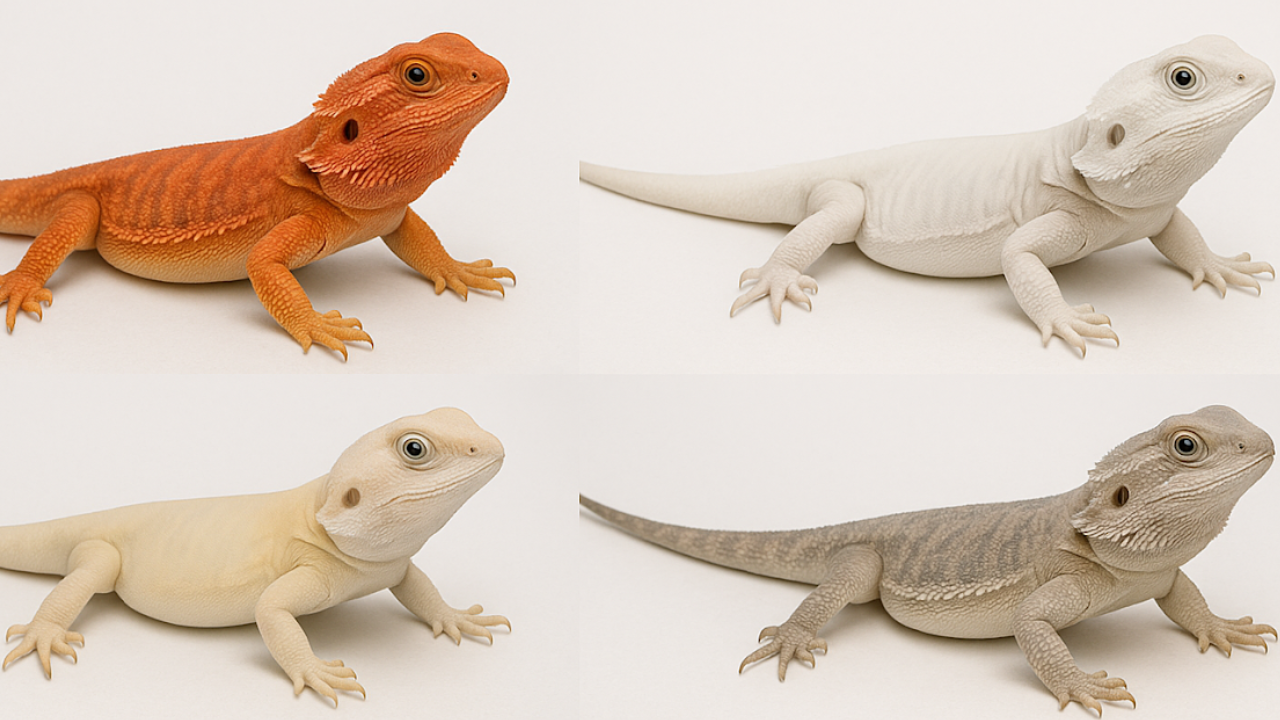
There are different morphs of bearded dragons, such as:
- Red Citrus Bearded Dragon
- Zero Bearded Dragon
- Hypo Leatherback Bearded Dragon
- Translucent Bearded Dragon
- Leatherback Bearded Dragon
- Red Bearded Dragon
- Sandfire Bearded Dragon
- Silkback Bearded Dragon
The lifespan of morphs tends to vary due to breeding practices and genetic health factors. However, fancy morphs can live long, healthy lives, even with genetic factors, if they are responsibly bred and cared for properly.
|
NOTE: Silkback bearded dragons are the ones with a genetic defect that causes them to be born with little to no spikes or scales. So, Silkies require more attention and care than normal bearded dragons due to their fragile skin. |
How Long Do Bearded Dragons Live as Pets?
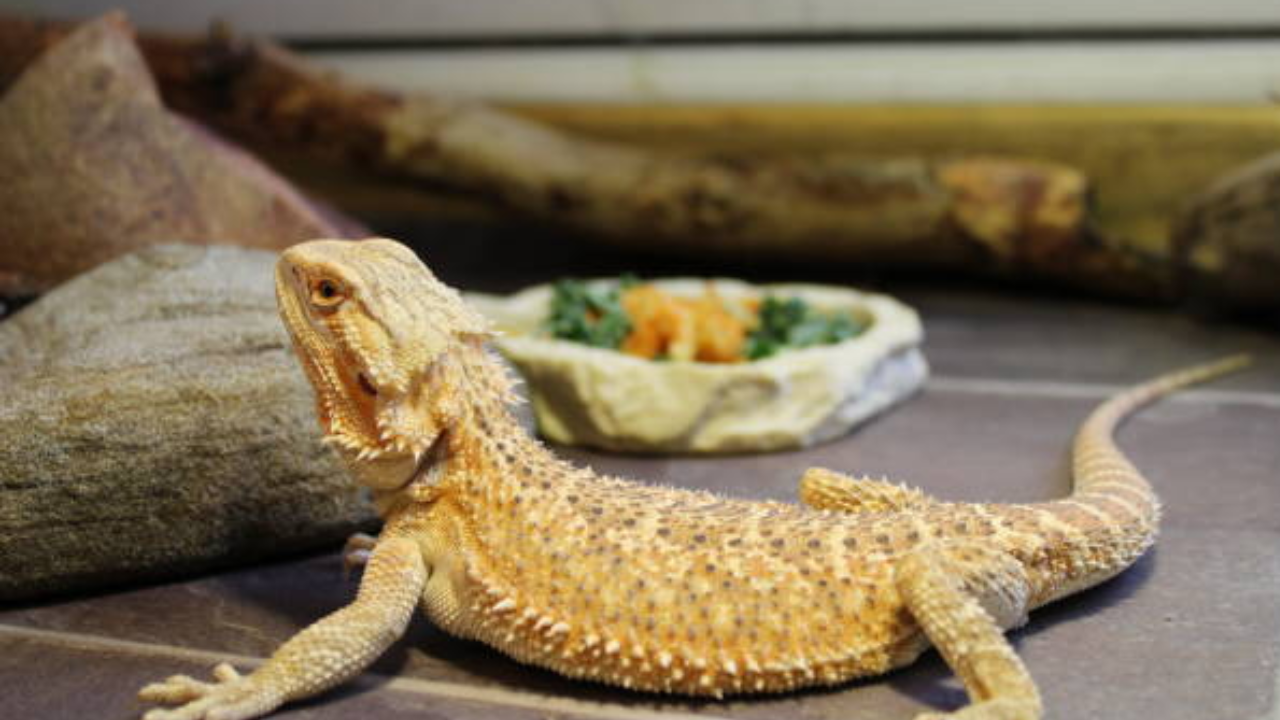
As per the Reddit query, many owners shared the lifespan of their pets. Most users reported that bearded dragons typically have an average lifespan of 8 to 12 years when provided with proper care, including a suitable habitat, a balanced diet, and regular veterinary check-ups. However, some bearded dragons can live longer, with the oldest bearded dragons reaching an age of 17-18 years.
What Happens When a Bearded Dragon Gets Old?
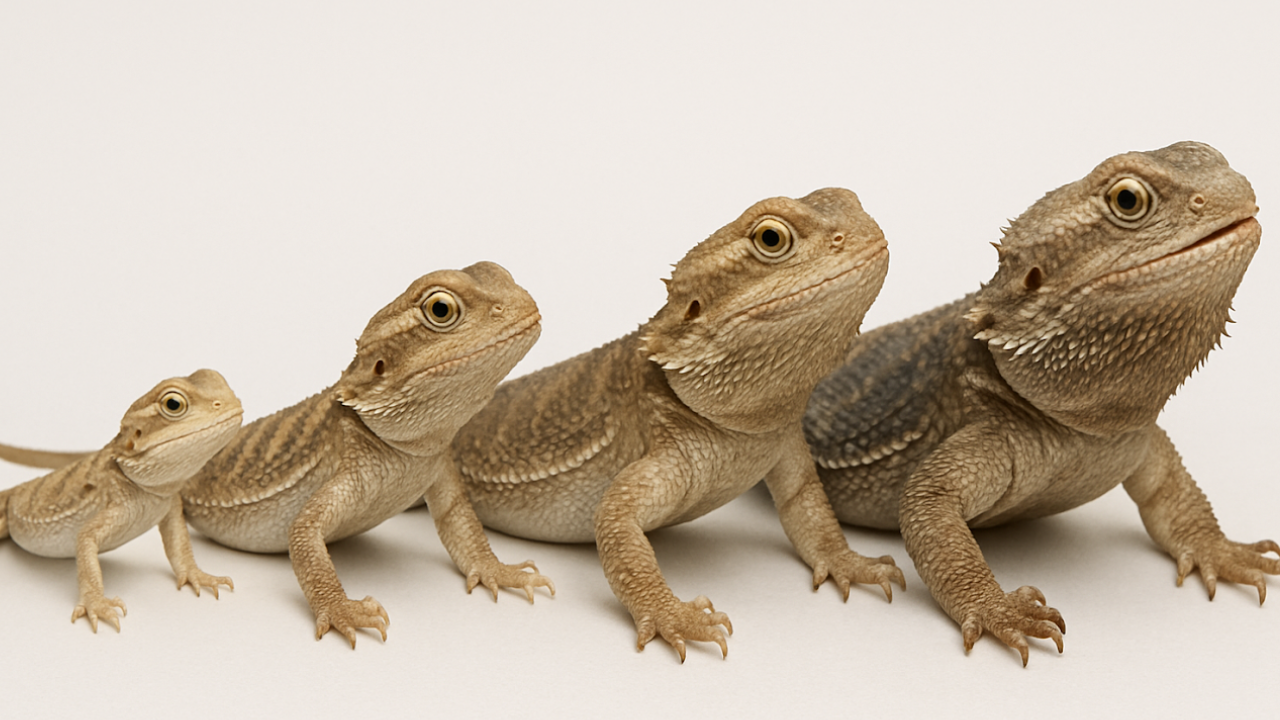
As bearded dragons age, they undergo changes in their behavior, health, and physical appearance.
They may:
- Experience decreased activity.
- Have reduced appetite.
- Show signs of weakness.
- Spend more time on the cooler side of their enclosure.
- Become more prone to diseases.
What Do Bearded Dragons Eat When They Get Older?
As the bearded dragon ages, their diet shift primarily from insects to a plant-based diet with occasional insects.
Vegetables and Greens
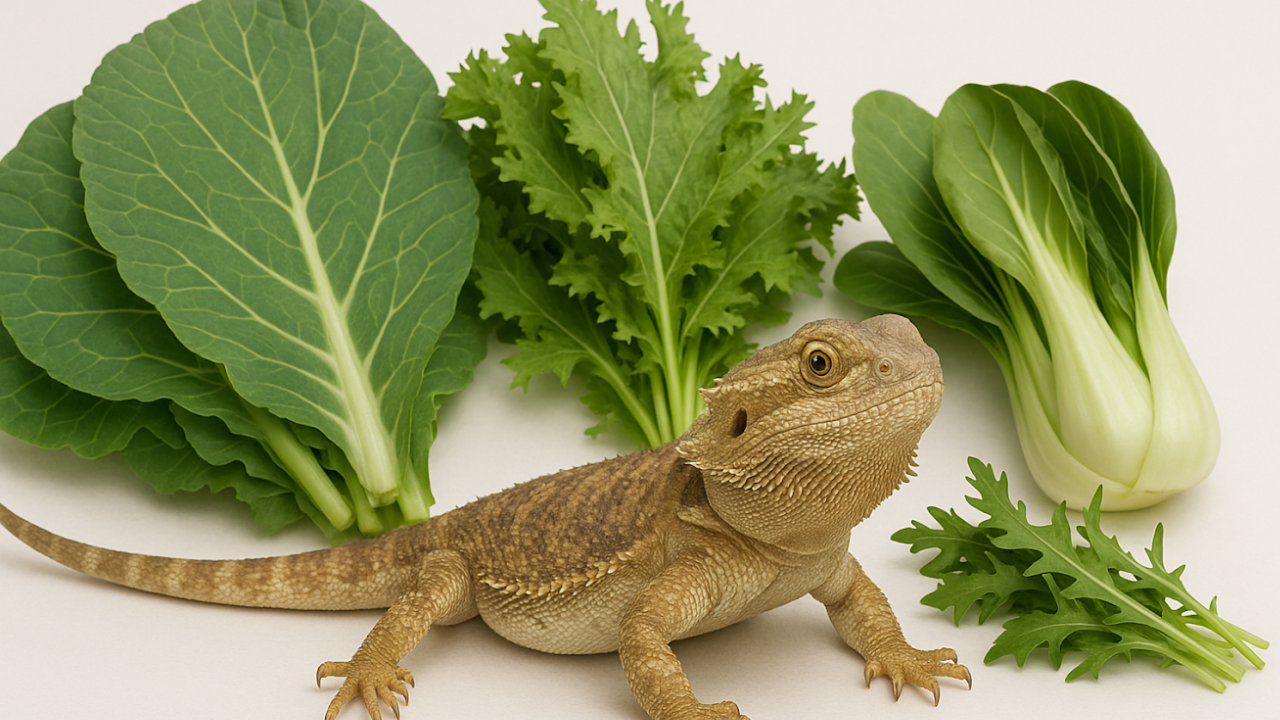
- Collard Greens
- Mustard Greens
- Turnip Greens
- Dandelion Greens
- Bok Choy
- Endive
- Butternut Squash
Preparation Tips
- Cut the vegetables into small pieces that are smaller than the space between your dragon’s eyes to prevent choking.
- Certain vegetables can be detrimental to the bearded dragon’s health, like Avocado, Beet greens, Citrus fruits, Lettuce, Mushrooms, Rhubarb, and wild plants.
Protein (Insects)
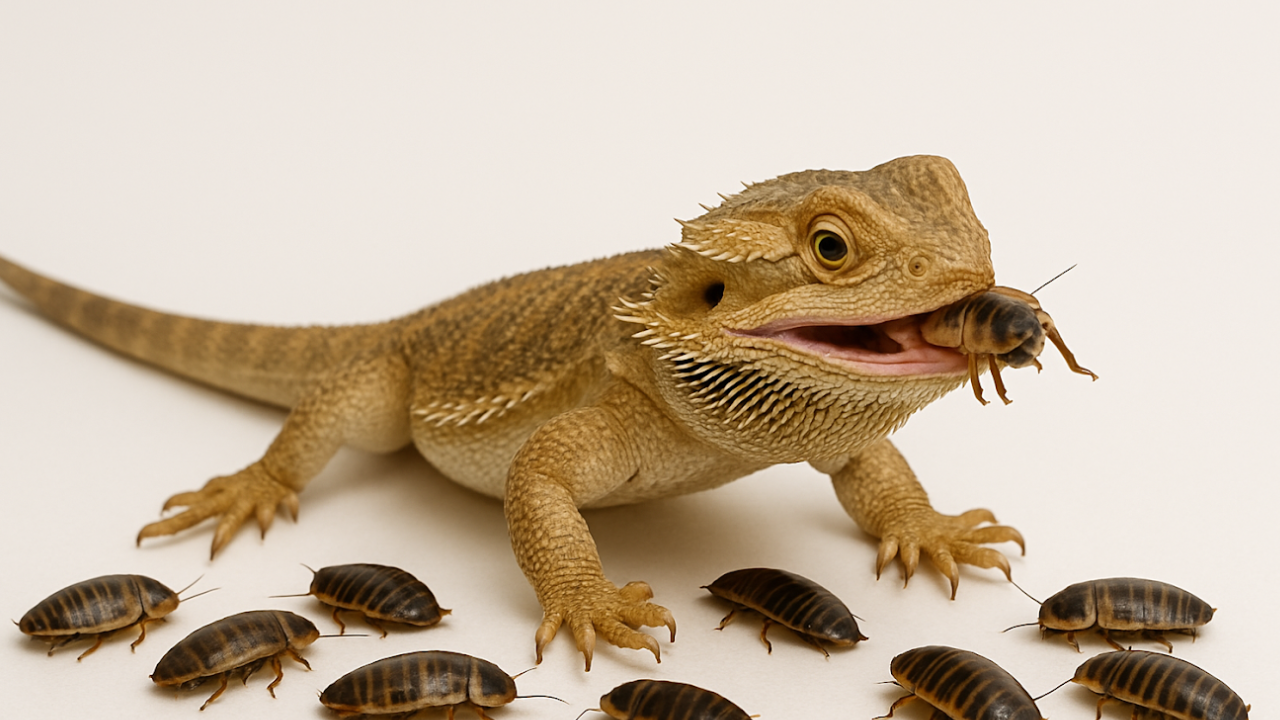
- Dubia Roaches ( Perfect live feeder insect for bearded dragons due to their high nutritional value, like protein, calcium, and mineral content).
- Crickets
- Black Soldier Fly Larvae
- Silkworms
|
NOTE: Most owners feed Dubia roaches to their pet. So, if you are searching for best feeder insects for your pet, then we provide high-quality Dubia roaches that is ideal food for your reptiles or amphibians. |
Feeding Guidelines
- Make sure to offer insects in amounts that your bearded dragon can eat within a 10-15 minute period.
- Remove any uneaten insects promptly to prevent stress and potential health issues in bearded dragons.
Fruits (Occasional Treats)

- Apples (peeled)
- Papaya
- Mango
- Blueberries
- Strawberries
- Bananas (in moderation).
Preparation Tips
- Peel fruits to remove pesticides and toxins.
- Cut fruits into small, manageable pieces to facilitate easy consumption.
Supplements
1. Calcium
This helps prevent metabolic bone disease caused by calcium deficiency.
2. Vitamin D3
Vitamin D3 is also important, just like Calcium. If you are looking for a supplement, ensure it contains both calcium and vitamin D3.
3. Multivitamins
Multivitamins are also a good option for bearded dragons. Make sure to discuss with the veterinarian about your bearded dragon’s specific needs.
Do Bearded Dragons Poop Less as They Get Older?
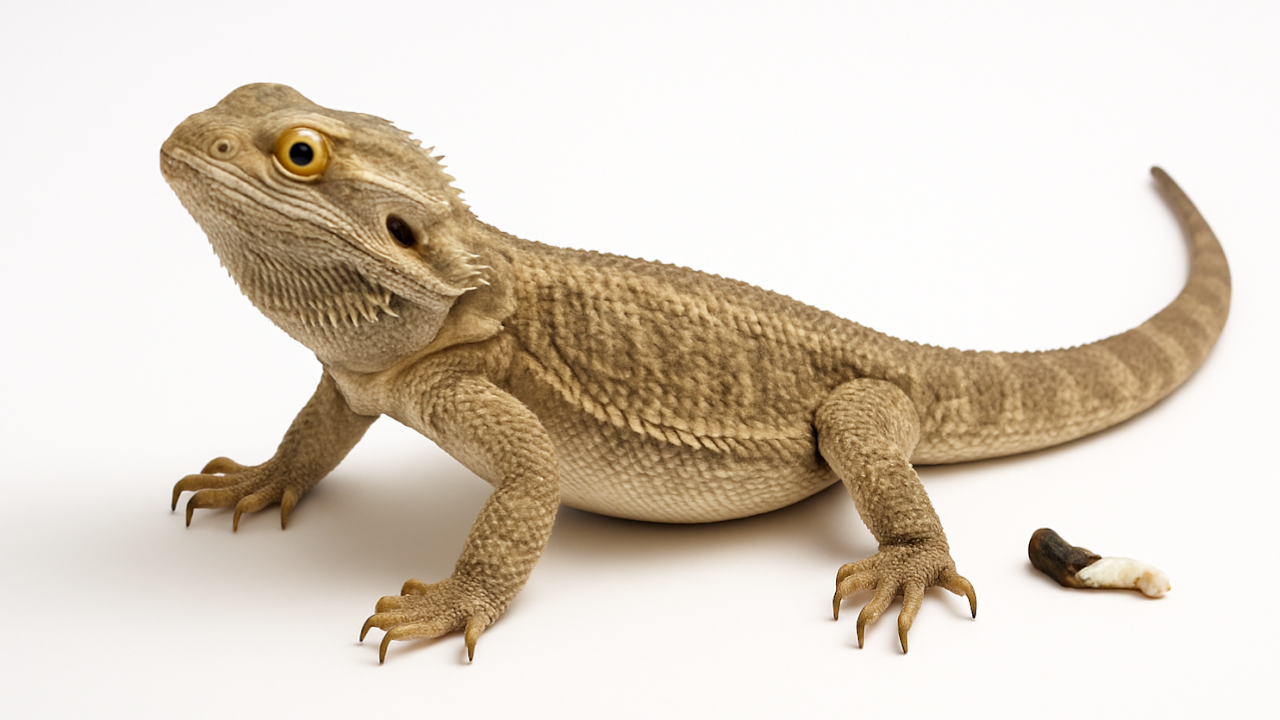
Yes, bearded dragons poop less frequently as they age as older dragons tend to have fewer bowel movements. Hydration and diet play a crucial role in digestion and the frequency of bowel movements in full-grown bearded dragons.
|
Age Group |
Typical Poop Frequency |
Reason |
|
Babies (0-3 Months) |
1-3 times per day |
This high frequency is due to their rapid growth and a protein-rich insect diet that is easily digestible. |
|
Juveniles (4-18 Months) |
Once a day or every other day. |
This happens as their diet starts to include more vegetables. |
|
Young Adults (18 Months- 3 Years) |
1-3 times per week. |
It all depends on their diet, hydration, and individual metabolism. |
|
Mature Adults (3-7 Years) |
1-2 times per week. |
Adults eat more fibrous vegetables and fewer insects. |
|
Senior Bearded Dragons (7+ Years) |
Once a week or even less. |
Aging slows down the metabolic processes, including digestion. |
|
NOTE: It is important to note that individual bearded dragons vary. |
How Can You Tell How Old a Bearded Dragon Is
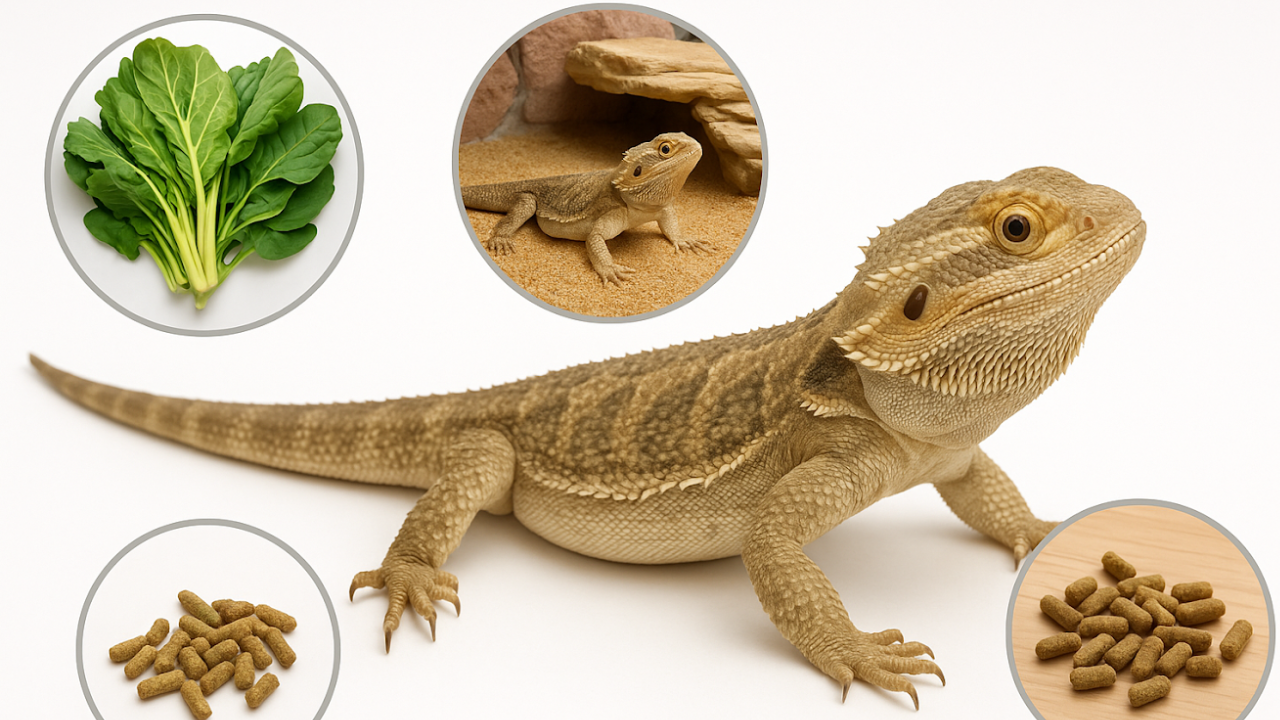
The diet and care needs of bearded dragons change across their life stages. Therefore, it is essential to learn how to predict the age of the beardie, allowing you to focus on their care at various stages of their life.
Here are some general guidelines for telling how old a bearded dragon is:
|
Predicting the exact age of a bearded dragon can be tricky, but there are some methods to estimate it.
1. Teeth Condition
Older dragons tend to have yellowed and worn-down teeth. This helps determine their estimated age, especially if they are significantly older.
2. Size
Another method is to check the size of the adult bearded dragon. However, it can be inaccurate. Bearded dragons generally grow at different rates depending on their diets and genetics.
3. Overall Appearance and Behavior
Old bearded dragons may become more sedentary with time, but this varies. Consulting with a veterinarian or reptile specialist can help you provide a more precise age estimation of a bearded dragon.
4. Length from Head to Tail
For young dragons, measuring their length from head to tail can provide a rough estimate.
What Factors Affect the Lifespan of Bearded Dragons?
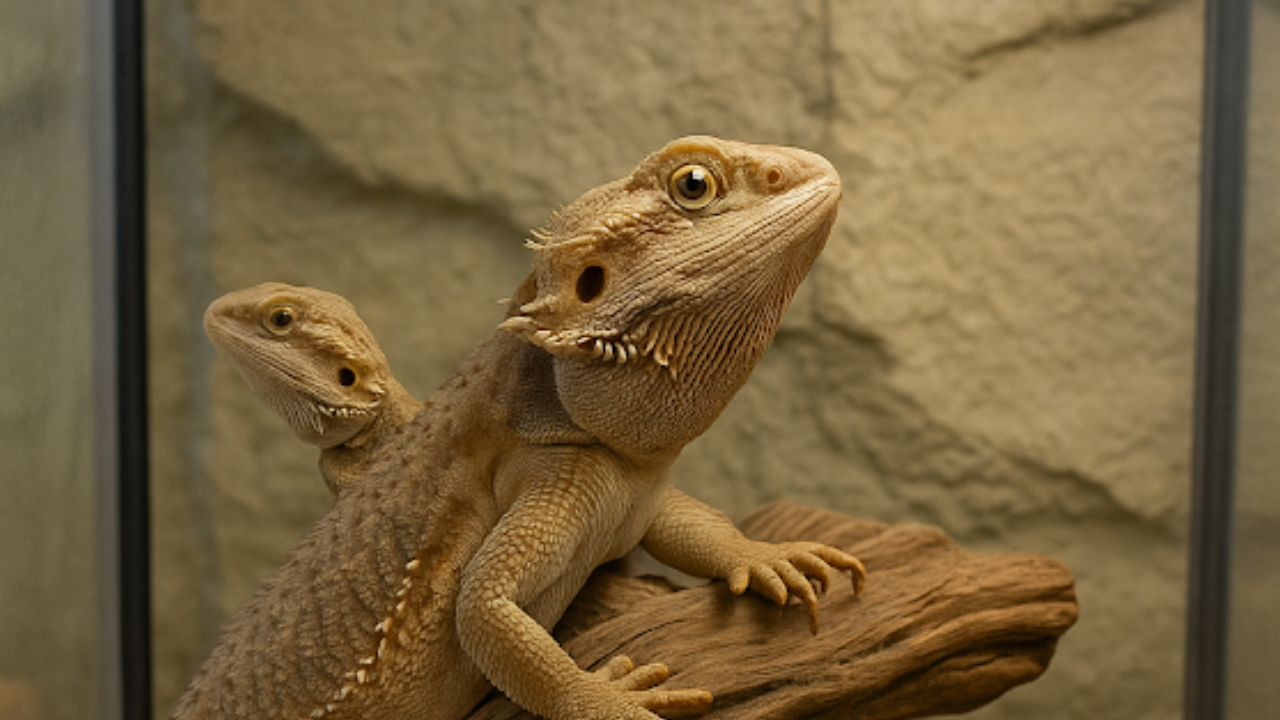
Bearded dragons tend to live up to 10-15 years and up to 20 years in captivity with good care. Here are the factors that affect the age span of bearded dragons:
1. Diet
Balanced nutrition is important. So, make sure to provide:
- A diet that is rich in protein (insects) for juveniles and more vegetables. Dubia roaches are an excellent source of protein and offer a high nutritional value.
- Greens like collard greens, turnip greens, and dandelion greens, when consumed by adults, support healthy growth and longevity.
2. Habitat
A properly maintained habitat is one of the most important factors that affect the lifespan of a bearded dragon.
So, make sure to provide:
- A spacious, secure enclosure that is 3x longer than a bearded dragon. Typically, a 75-gallon tank for a 2-foot dragon.
- Temperature gradient:
- Create a hot side (95-110°F) and a cool side ((75-85°F)
- A habitat with humidity levels between 30% and 50%.
- UVB lighting, such as a heat lamp and a UVB tube.
- The appropriate substrate that mimics their natural desert environment also promotes digging and burrowing.
- A mix of 50% sand and 50% soil is a good option.
- Reptile carpet, paper towels/newspaper, and tile are also safe options.
- Decor: Add hides, branches, and rocks for climbing and hiding.
- Access to food and water.
3. Veterinary Care
Regular checkups and addressing any health concerns promptly can prevent serious issues and extend the life expectancy of the bearded dragon.
4. Genetic and Breeding
The lifespan of bearded dragons can be influenced by genetics. Additionally, breeding females have shorter lifespans compared to non-breeding ones, as the stresses of reproduction can take a toll on their health.
5. Size and Sex of Bearded Dragons
Larger bearded dragons tend to live longer. Male bearded dragons live longer than females (not bred).
6. Brumation
A period of dormancy can be beneficial for their health and potentially extend their lifespan.
Bearded Dragon Size and Growth
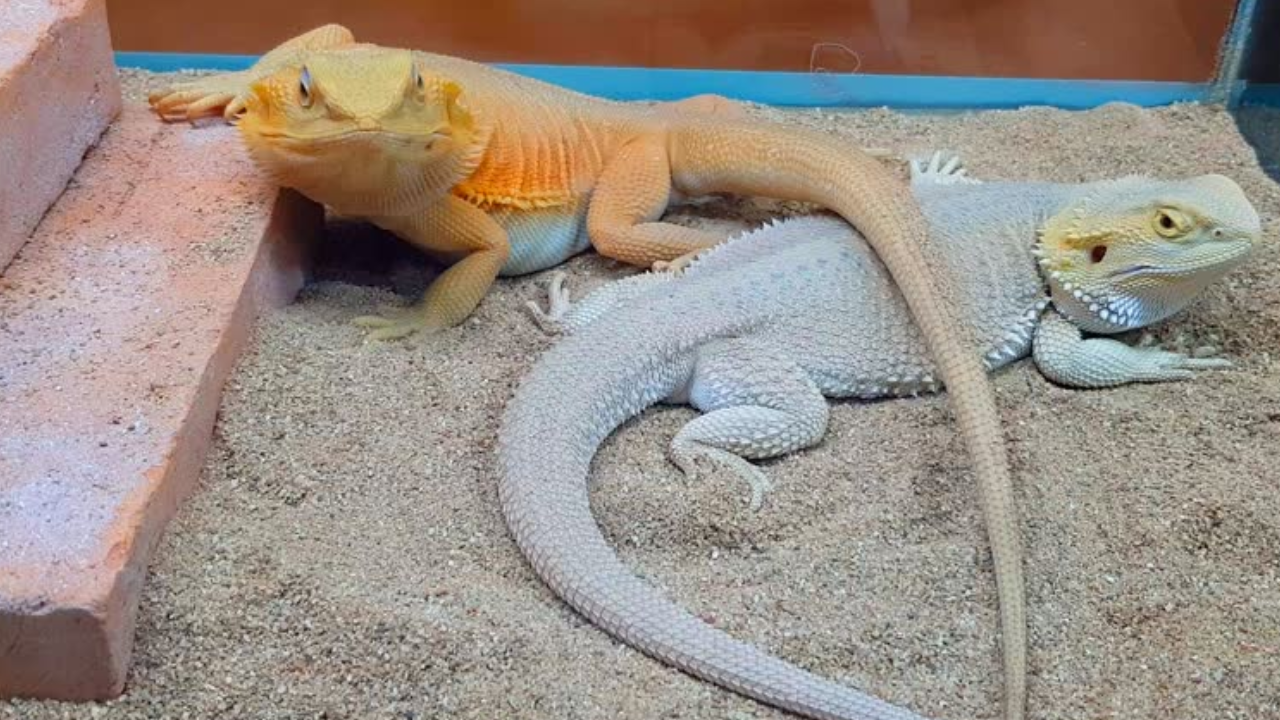
Here is the breakdown of the bearded dragon's full size and growth details:
|
Age |
Length (inches) |
Weight (grams) |
Notes |
|
Hatchling (0-2 months) |
3-4 |
4-20 |
Rapid growth in the early months. |
|
2 months |
5-6 |
15-20 |
Growth rate is 1 inch per month. |
|
3 months |
6-7 |
20-30 |
Start of more visible growth. |
|
4 months |
10-11 |
40-70 |
Significant growth spurt. |
|
6 months |
13-14 |
100-150 |
They are noticeably larger, around 14 inches. |
|
8 months |
15 |
150-200 |
Many bearded dragons reach 15 inches by 8 months. |
|
10 months |
17 |
200-300 |
Males can grow to 18 inches. |
|
1 year |
18-20 |
300-400 |
Approach adult size. |
|
2 year |
17-18 |
400-500 |
Full-grown for most female bearded dragons, but males can still grow slightly. |
|
3 year |
18-24 |
500+ |
Males reach their maximum size of 20-24 inches. |
|
Important Consideration: This table provides general growth information for bearded dragons; however, individual growth rates vary widely. There are many factors, such as diet, genetics, health, and environmental conditions, which affect the size and growth of each bearded dragon. |
Key Points
- Rapid growth occurs in the first six months, followed by a slower pace thereafter.
- Males tend to grow larger than females, reaching 20-24 inches, while females reach 16-20 inches.
How to Care for Your Bearded Dragon Throughout Their Life
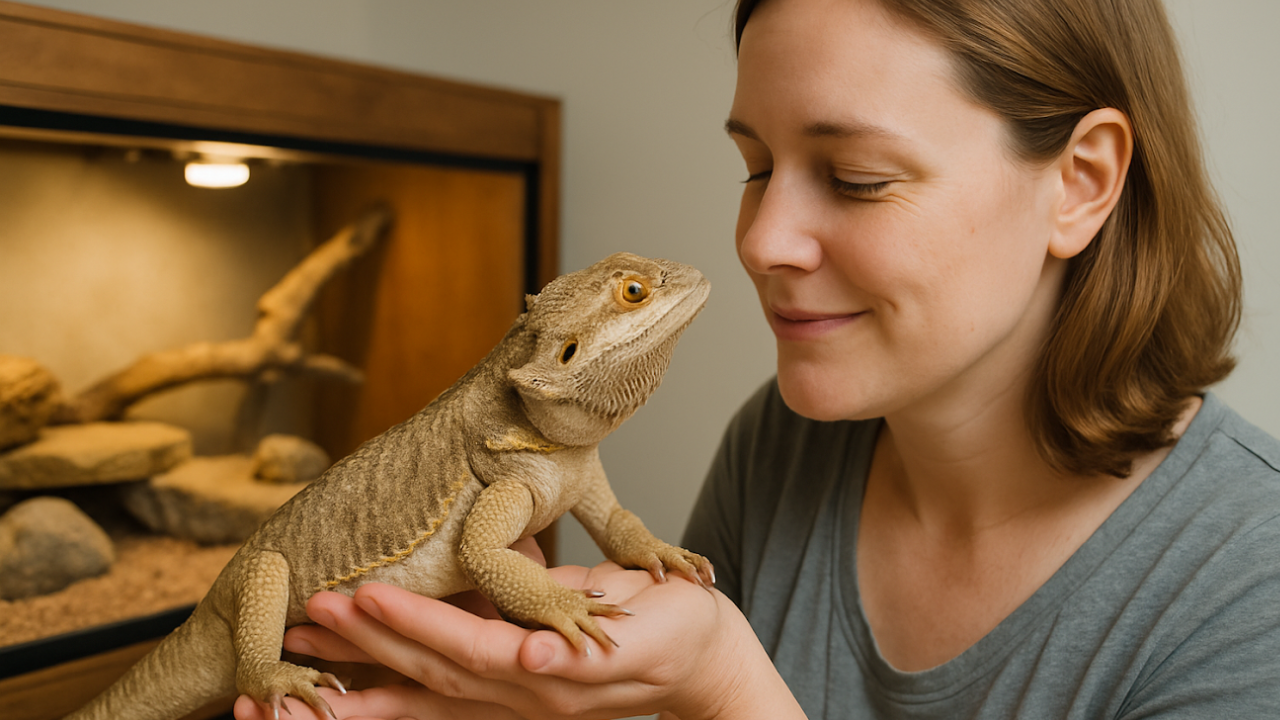
- Provide a proper diet as per female and male bearded dragon’s nutritional needs.
- Remove waste and uneaten food daily.
- Provide fresh water in a bowl and mist the enclosure to maintain the humidity.
- Thoroughly clean the bearded dragon tank at least once a week using reptile-safe disinfectants.
- Rotate food types and provide different types of greens and insects.
- Schedule regular checkups with an exotic veterinarian.
Conclusion
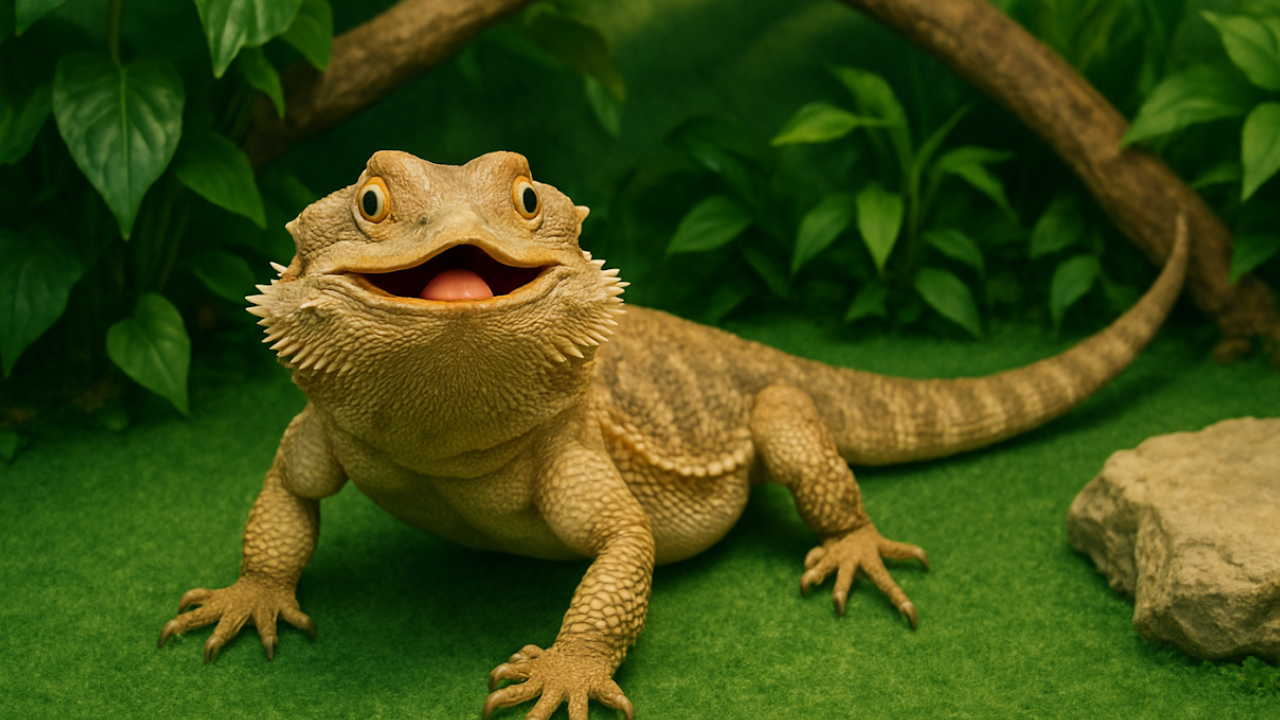
Bearded dragons are great reptilian pets. Understanding their diet needs, habitat, and health requirements, you can ensure your bearded dragons thrive for years to come. Also, it is essential to consult with a veterinarian about the bearded dragon’s nutritional requirements.
“Long live the bearded dragons – healthy, happy, and thriving!”

